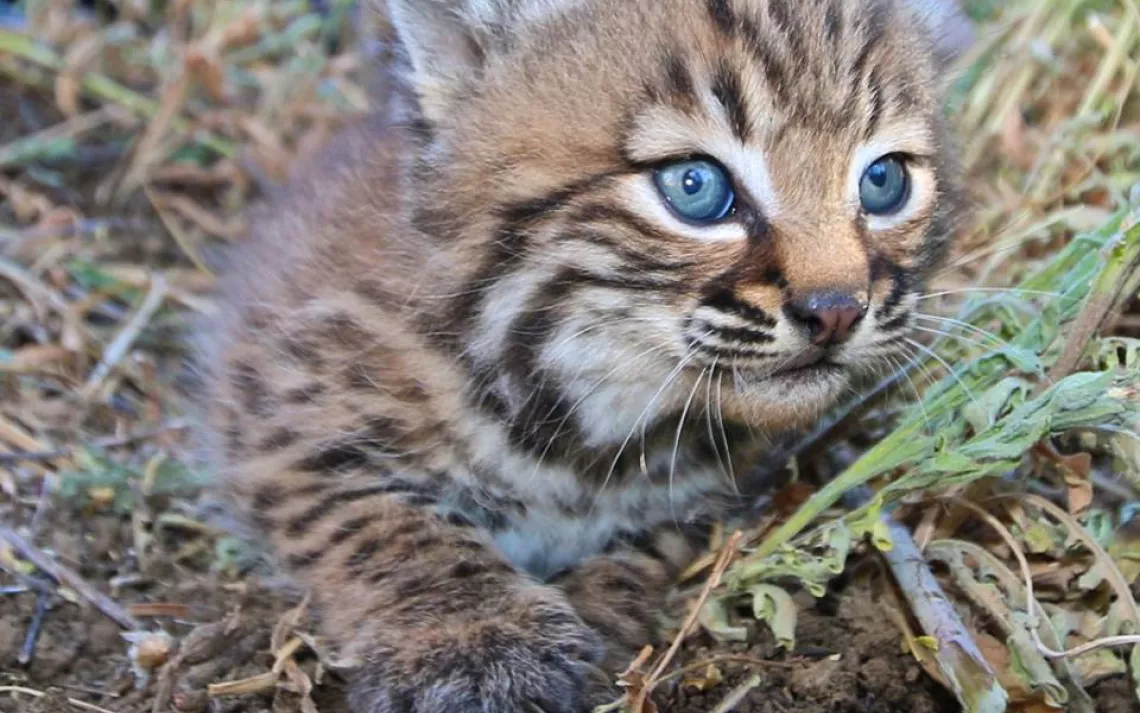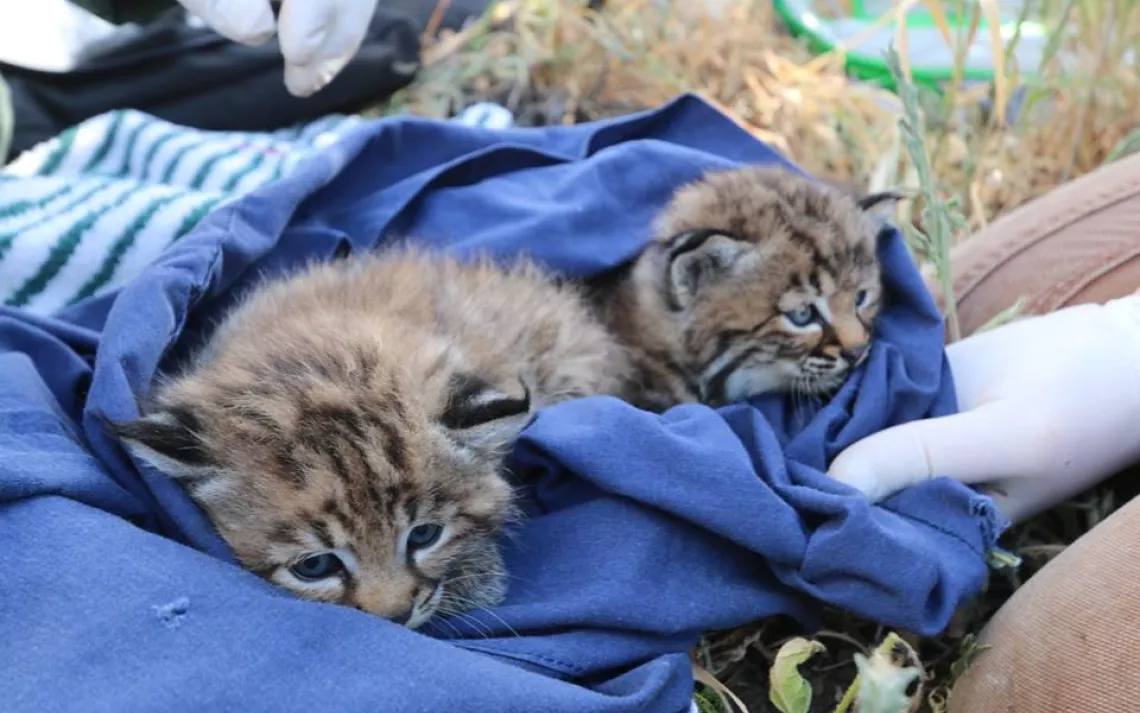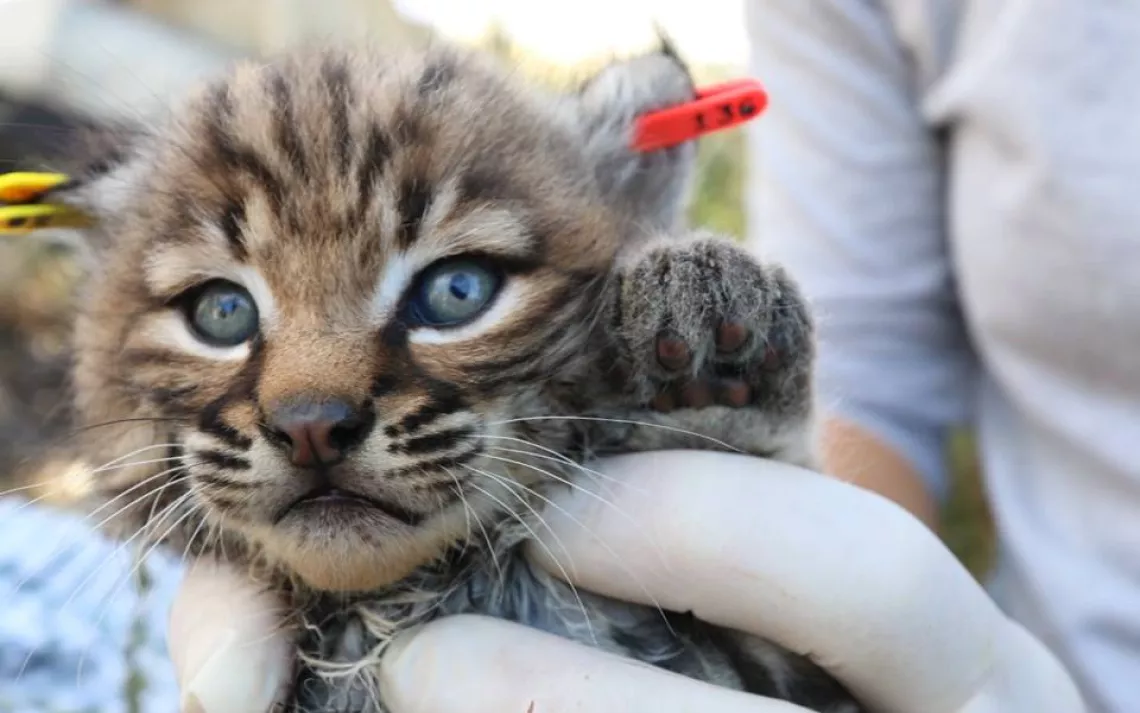Wide-eyed and Whiskered Baby Bobcats
The Simi Hills in Southern California were recently blessed with two very furry baby girls! Welcome bobcat kittens B326 and B327.
The kittens, about four weeks old, were ear tagged as part of a 20-year-long study of how urbanization affects the bobcat population in the Santa Monica Mountains Recreation Area and surrounding habitats. The kittens' mother, B225, has been part of the study since 2010, and her kittens were tagged while she was away from the den. The kittens were returned, of course, but not before biologists measured teeth, head circumference, legs, and tails.
These measurements are vital to studying genetic variation, the lack of which is quickly becoming a problem for the region’s bobcats. Freeways, disease outbreaks, and missing habitat corridors have split the cats into three distinct populations, leading to smaller gene pools and lack of genetic diversity within each group. Biologists are hoping to find a way to connect the populations. When larger populations of bobcats are breeding with one another, they are healthier. But for now, we can enjoy the adorable fuzzy fruits of this study.
 The Magazine of The Sierra Club
The Magazine of The Sierra Club







